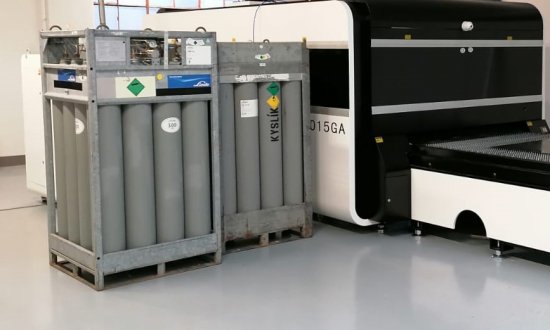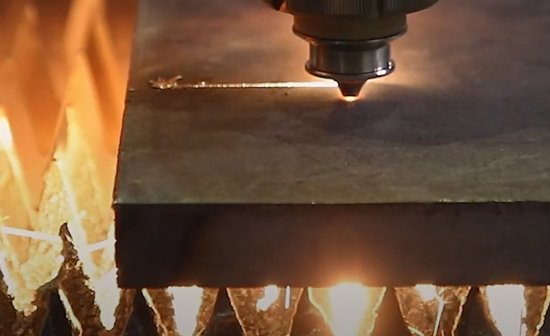Gas consumption in laser cutting
Laser cutting with a fiber machine requires the use of technical gases to achieve maximum cutting quality. Depending on the gas used, a distinction is made between the method by which the metal material is burned with a fiber laser. Nitrogen and oxygen are most often used in compressed form in bundles or, in larger quantities, in liquid form in an evaporator.
Cutting metals with oxygen
The gas consumption in this case is on average around 5 Nm3 / hour. The indicated pressure is approx. 5 bar with a maximum of 8 bar. Higher working pressure usually means a better cut. With the use of oxygen, we are talking about oxidative cutting, when the material in the cut will largely burn out with the help of oxygen. The cut may have small burrs on the underside of the cut sheet. This oxygen cutting method is suitable for structural steel and is cheaper but also slower.
Burning with nitrogen
Nitrogen has higher operating pressures, up to 20 bars, and consumption is also higher. On average, we can claim a nitrogen consumption of around 50 Nm3 / hour. This is fusion cutting, when the melt is blown away from the joint with the help of an inert gas (nitrogen). The advantage is a high-quality and productive cut, we recommend cutting stainless steel, aluminum and other non-ferrous metals exclusively with nitrogen. There may be small burrs on the underside of the material. The cut is very productive at the cost of more gas volume.
Cutting metals with compressed air
In general, we do not recommend this method, and if you consider it, only for thin materials up to 3 mm thick. The working air pressure should be at least 6 bar. However, you will not achieve the same productivity or cutting precision as with the use of technical gases. This method is unsuitable for stainless steel, as the cut is yellowed and thermally deformed.
Circumstances affecting consumption
Several factors that are part of laser cutting have a huge effect on gas consumption. This is because the fiber laser can have different power, the nozzle in the laser head can have a different diameter or the operator of the laser cutting machine will set different working pressures. Consumption is most influenced by the type of brew itself. Factors that fundamentally affect the consumption of nitrogen or oxygen as technical gases are:
- Power of the laser source - with higher power, cutting is faster and gas consumption is therefore lower
- Nozzle used - in the range from 0.8 to 3 mm and consumption increases with a larger nozzle diameter
- Cutting pressures - higher pressures have an effect on a better final cut, but also increase consumption
- Set cutting speed - similar to fiber laser performance, this value is directly dependent on the technical gas
- The type and strength of the material - a huge influence on the cutting conditions, the complexity of the firing can also be added
- Setting parameters - such as focus, speed control, cooling, etc.
- Losses on the way - minimal gas losses also occur on the way from the gas source to the laser cutting machine
The form of gases in a CNC laser
Storage of gases can basically be in the form of individual cylinders for occasional use of one of them. Another form is a bundle of bottles filled to 200 or 300 bar. With higher consumption, you can consider a tank for the liquid form of gases, when the cost of acquisition is up to a third! The highest level is the own production of individual gases from the air using a separator.


As part of our expertise, we will be happy to advise you precisely on your application and recommend the appropriate gas, form, pressures and set other parameters. Over time, everyone learns to calculate consumption according to their production. In case of questions, call or write to us. We are your partner in laser burning of sheets, profiles and pipes.